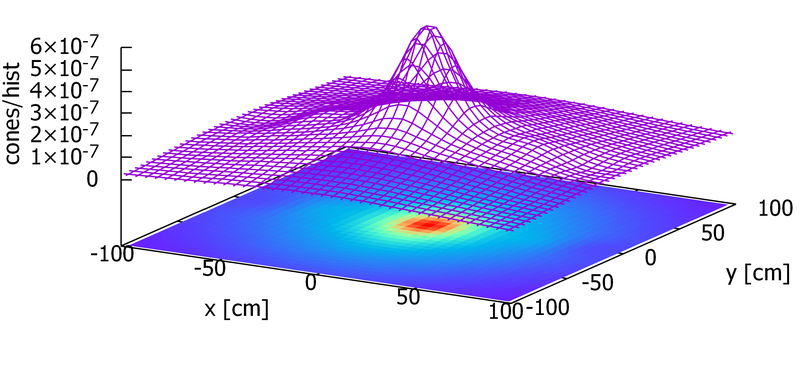Study of a Compton camera based on CsI(Tl) scintillator bars for radiological environmental imaging
Oct 14, 2020
Maria Dolores Rodríguez González will defense her thesis in the mark of the PhD program in Nuclear and Ionizing Radiation Engineering. Title: 'Study of a Compton camera based on CsI(Tl) scintillator bars for radiological environmental imaging' Date: 29/10/2020 Time: 12:00 (UTC) Place: Aula 31.07 (Building C'), Virtual Room: https://meet.google.com/zki-nbju-hfn
Compton cameras are used for radiological imaging, which can be useful in environmental applications and especially in determining the position of hidden sources. Current Compton cameras are based on pixelated detectors with complex electronic instrumentation and these devices are usually expensive. In order to overcome these issues, a Compton camera consisting of scintillator bars with two photo-sensors placed at both ends is a promising option. In addition, it is expected that this kind of detectors make the Compton camera lightweight and robust.
Characterization of two identical CsI(Tl) scintillator bars with two silicon photomultipliers each one was done. The basic characterization parameters of detectors, such as the attenuation coefficient, position resolution and energy resolution, were determined experimentally with a collimated 137Cs point source. Different light attenuation coefficients were found for identical scintillators, causing different position resolutions. This fact highlights the importance of carrying out a control analysis for each detector. In addition, the position resolution and energy resolution were found to be independent of the position of γ-ray interactions within the crystal.
Monte Carlo (MC) simulations with PENELOPE/penEasy were carried out to design a Compton camera. In order to achieve this, the MC simulations needed to be validated. This was done by comparing both simulated and experimental data obtained in two different experimental measurement campaigns. In the first campaign, two detectors were irradiated individually with a collimated point source, while the second campaign consisted of irradiating a simple Compton camera made of two CsI(Tl) scintillator bars. The geometry defined in the MC simulations and the codes used to calculate the image for a Compton camera based on CsI(Tl) scintillator bars were validated with these experimental campaigns. The response of each individual detector, the Compton camera efficiency, the angular resolution and images obtained with MC simulations and experimental measurements were compared. Results show good agreement between experimental and simulated data.
Once the MC simulations were fully validated, the design of a Compton camera consisting of two layers with four CsI(Tl) scintillator bars each was done. The cross-section size of crystals and distance between layers were optimized based on Compton camera efficiency, angular resolution and image resolution. This analysis was carried out with an energy range of 360-1330 keV. The final optimized Compton camera consists of two layers separated by 10 cm. Each layer has four 2×2×10 cm3 CsI(Tl) scintillator bars. The characterization of the Compton camera was then carried out. The field of view, efficiency, angular resolution and image resolution were calculated. In addition, the ability of the Compton camera to make use of the simple back-projection method to identify radioactive material in the environment has also been evaluated by simulating several point sources. The Compton camera was able to detect several point sources simultaneously, however, as the number of sources increases, the images became blurred. The capacity of the Compton camera is promising, since it can detect several sources in the environment according to MC simulations. Therefore, the construction of a Compton camera based on eight 2×2×10 cm3 CsI(Tl) scintillator bars should prove to be useful for environmental measurements and for installation on unmanned aerial systems, commonly called “drones”.

Share: